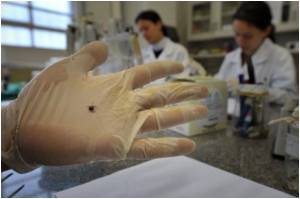A long-standing mystery of how cells conduct quality control to eliminate the toxic effects of a certain kind of error in protein production has been solved by scientists.

"It is exciting because we are dealing not only with a process that is clearly relevant for physiology and disease but also with new biology," said lead author Claudio Joazeiro.
The new study has suggested how cells in eucharistic organisms, like humans, sense and destroy "non-stop" proteins that remain stuck in the ribosome, the protein manufacturing plant of the cell.
One element in mRNA essential to this protein manufacturing process is known as a "stop codon." A stop codon both signals the end of the mRNA coding sequence to the ribosome so it stops assembling the protein, and recruits factors that promote the protein's release into the cellular cytoplasm so the protein can go forth and perform its biological functions.
When mRNA is accidentally missing a stop codon, however, the ribosome is like an auto manufacturing plant that can't get a car off the end of the line-the line stalls and production stops.
"In addition, these defective mRNA are problematic because they are translated into aberrant proteins," explained Joazeiro.
In the current study Joazeiro and Bengtson used the yeast S. cerevisiae as a model organism. Yeast is complex enough to share many cellular features with other eukaryotes such as mice and humans, yet relatively simple to work with in the lab.
When the results were in, they showed that cells without Listerin (called Ltn1 in yeast) failed to get rid of non-stop proteins and died when those proteins were produced.
"The [bacterial and eukaryotic] mechanisms are very different, but the concepts are remarkably similar-that's the beauty of it.
"It also turns out that in the same way that the tmRNA molecule is conserved in all bacteria, Listerin is conserved in all eukaryotes, which once again highlights its importance.
"It appears that between tmRNA and Listerin we have coverage throughout most living organisms of the surveillance of these defective proteins," said Joazeiro.
Source-ANI
 MEDINDIA
MEDINDIA




 Email
Email





